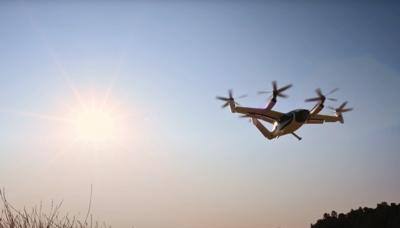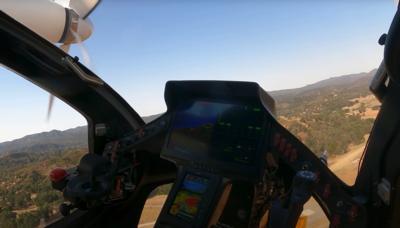Tue, Feb 22, 2022
EVTOL Manufacturer Suffers Setback in Certification Process, Can it Rebound?
Joby Aviation's flight test accident made waves after breaking the company's stride over recent months, marking the first real unscheduled problem for the eVTOL manufacturer.

The prototype in question has been said to be used for high-speed stability testing, a conjecture supported by flight tracking data showing a speed over 270 mph not long before the crash, a fair bit faster than its nominal top speed of 200 mph.
News broke of the incident after a mandatory SEC report was made saying as required by law to alert investors to unscheduled corporate events. The report was somewhat understandably vague, merely saying that "one of its remotely piloted, experimental prototype aircraft was involved in an accident during flight testing at our remote flight test base in California." The company recently caught the eye of some when their paperwork requesting approval for unmanned, remotely-piloted flights. Their decision to forego a pilot could well have saved a life in this instance.

Pulling some of the flight tracking data for the N-number registered to the company paints a likely picture of what was happening: Evaluation of their prototype at speeds beyond their anticipated maximum, required performance for certification. Those familiar with FAA certification recall that aircraft are required to be capable of flying at 1.3 times their stated top speed, which would put the aircraft's velocity right in the neighborhood of the requirement just before dropping off of tracking.
The requirement ensures aircraft are designed with a valuable safety buffer. Going 30% beyond a "never exceed" speed may not be as common in a multirotor VTOL aircraft, but it's still well within the realm of reason for standard operations in descents. The lessons learned by Joby will hopefully go towards keeping their second prototype in the air - an aircraft whose birth was fortuitously timed for this occasion. Joby only recently announced a second pre-production prototype aircraft to ensure the continuation of their work on certification.
More News
Takeoff Roll The process whereby an aircraft is aligned with the runway centerline and the aircraft is moving with the intent to take off. For helicopters, this pertains to the act>[...]
“We’re proud of the hard work that went into receiving this validation, and it will be a welcome relief to our customers in the European Union. We couldn’t be mor>[...]
"Aircraft Spruce is pleased to announce the acquisition of the parts distribution operations of Wag-Aero. Wag-Aero was founded in the 1960’s by Dick and Bobbie Wagner in the >[...]
IDENT Feature The special feature in the Air Traffic Control Radar Beacon System (ATCRBS) equipment. It is used to immediately distinguish one displayed beacon target from other be>[...]
Aero Linx: Pararescue Air Force Pararescuemen, also known as PJs, are the only DoD elite combat forces specifically organized, trained, equipped, and postured to conduct full spect>[...]
 ANN's Daily Aero-Term (05.10.24): Takeoff Roll
ANN's Daily Aero-Term (05.10.24): Takeoff Roll Aero-News: Quote of the Day (05.10.24)
Aero-News: Quote of the Day (05.10.24) Aero-News: Quote of the Day (05.11.24)
Aero-News: Quote of the Day (05.11.24) ANN's Daily Aero-Term (05.11.24): IDENT Feature
ANN's Daily Aero-Term (05.11.24): IDENT Feature ANN's Daily Aero-Linx (05.11.24)
ANN's Daily Aero-Linx (05.11.24)




